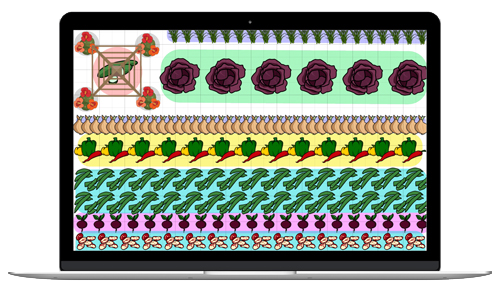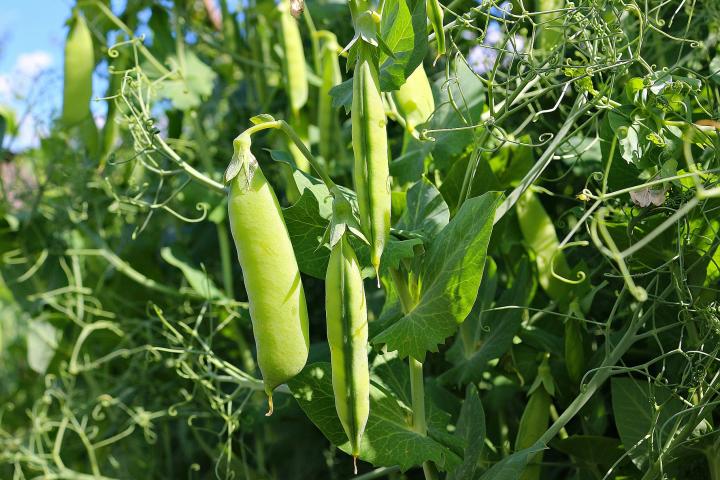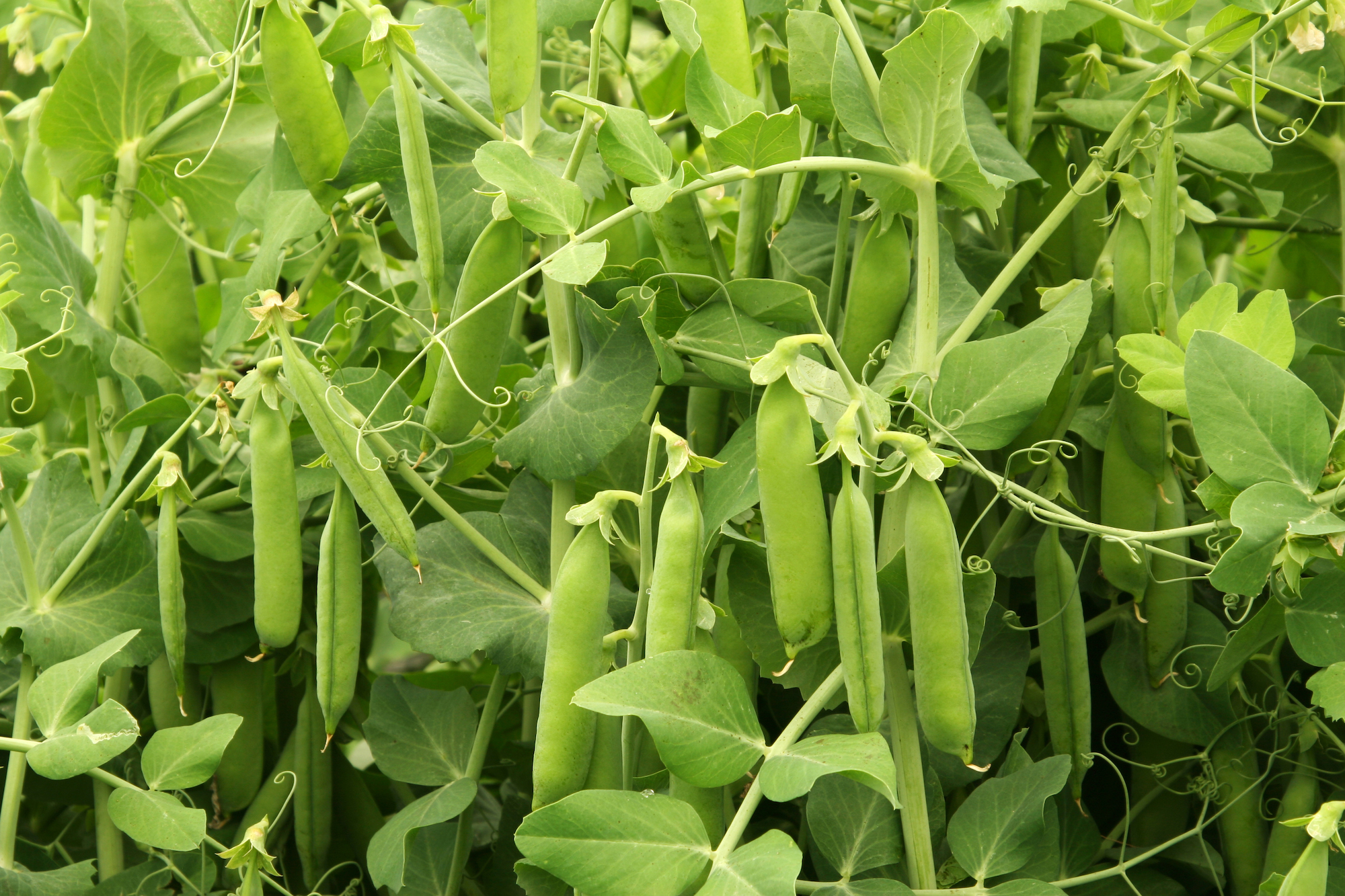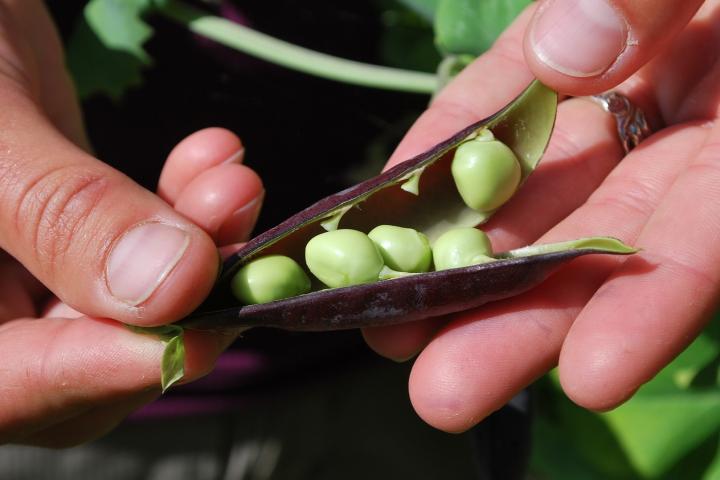
Plant sweet, crisp peas in the spring or fall for a tasty garden treat!
The Almanac Garden Planner - Use It Free for 7 Days!
Plan your 2025 garden with our award-winning Garden Planner.
Types
Shelling Peas: Also known as garden or sweet peas, these are the most common types of peas available. Some good varieties to try include:
- ‘Green Arrow’: 2- to 3-foot vines; no support required; high yields; tolerant of mildew and Fusarium wilt
- ‘Lincoln’: 2- to 3-foot vines; no support required; tolerant of mildew and Fusarium wilt
- The classic ‘Wando’: suitable for freezing
- ‘Thomas Laxton’: high sugar content
- ‘Progress No. 9’: good disease resistance
- ‘Little Marvel’: grows only 15 inches tall
Snap Peas: You eat the entire tender pod of snap peas. Some good varieties to try are:
- ‘Sugar Ann’: vines grow only 2 feet tall, no support required.
- ‘Sugar Snap’: the original (Calvin’s), just brought back; carried only by Johnny’s Selected Seeds
- ‘Early Snap’: an early-maturing version produces peas 10 to 14 days earlier than ‘Sugar Snap’
- ‘Super Sugar Mel’: produces 4-inch-long, very sweet pods
Snow Peas: Common in Chinese cooking, these flat-podded peas have edible pods. Some good varieties to try include:
- ‘Mammoth Melting Sugar’: 4- to 5-foot vines; stringless pods; wilt tolerant
- ‘Oregon Sugar Pod II’: grows only 2-1/2 feet tall
- ‘Snowbird’: resistant to fusarium wilt
Cooking Notes
Ideally, peas should be used when freshly picked as they rapidly toughen and will lose their sweetness.
Green peas can be eaten raw as a snack or in salads. Peas are also excellent in pasta, soups, casseroles, stir-fries, and sautés. Cooking times vary greatly depending on when the green peas were harvested. Young, small ones require less cooking than older, starchy ones.
To steam, put 1 inch of water in a pot, bring to a boil, place a steaming basket in the pan, slowly add peas to the steaming basket, and cover with a lid. Steam for about 2 minutes. Or, to microwave, put 2 tablespoons of water in a microwavable dish and cover. Microwave on high, checking every 2 minutes for doneness. Add butter and salt as desired.
Interestingly, the pea tendrils are also edible! Harvest these young pea shoots when they are 12 to 18 inches out of the ground. As with peas, eat the tender shoots soon after harvesting. Add to salads or into stir-fries at the end of cooking.
ADVERTISEMENT
I have a beautiful 5' fence in the middle of my garden, which is thick and full of pea vines, but very few peas. They have always produced well in winter (in Arizona), organic, heavily composted soil. Last year I added about 300 lbs. of coffee grounds to the soil and did not solarize during the summer, as usual. Would either of these affect the production of peas? It looks like every seed germinated and flourished.
Peas do not need—or usually want—”good” soil, which is to say the kind of soil that so many other plants love—composted soil. Peas perform best with little attention. The coffee grounds, especially such a quantity may have upset the balance of your soil, adding nitrogen which encourages leaf/foliage growth. Sounds like a little too much of a good thing. In future, compost the coffee grounds and use the results on other plants.
I am currently germinating my peas (don't ask why, it's science-related) and I very stupidly put them in a water temperature of 102 degrees Fahrenheit. Do you think I should restart or is there a chance that the peas could sprout?
Hmm. 102F is lukewarm water. I’m not sure if the seeds will be happy, but if they were not in the warm water for long, some may still sprout. However, I think you might get reduced germination rates. Peas do not germinate well above 85F soil temperature. Being exposed to overly warm temperatures may also cause other physiological changes. For the sake of a science experiment, it might be better to start over. You could still test these as well, too, to compare (might be an interesting experiment in itself). Good luck!
i have a small pea plant growing in a small pot and i am wondering if they get really big so i know to transplant it soon.
Although peas don’t like their roots disturbed, and therefore usually are planted directly in the garden, gardeners have had success growing them indoors and then transplanting out when weather is more cooperative. To do this, there are several methods, one of the most common being starting the seeds in peat pots which can then be transplanted, pot and all, into the garden; the pot will disintegrate over time, which lessens the disturbance to plant roots. Another method is described here:
http://www.almanac.com/video/get-growing-early-peas
How big a pot you’ll need and when you’ll need to transplant will depend on the variety of pea, the size of the current pot, and whether you plan to grow your peas outside or if they will be completely container-grown. In general, bush peas can grow about 18 or so inches high. There are also those that grow up to about 24 or 30 inches. Pole types can grow 4 to 6 feet, or more, and will need support. You can transplant peas into the garden any time after they are 4 inches tall; or about 4 to 6 weeks after starting seeds. Place in the garden no earlier than 4 weeks before the last expected spring frost.
Do older peas or beans germinate better in warmer soils?, soaked ? inoculated?
Have had some luck with warmer soils on non soaked or inoculated beans and peas.
I’m not sure if an inoculant would help the seed to sprout; it’s my guess that it is more to help the plant once it forms roots (which is where the nitrogen-fixing bacteria make their home). However, soaking and warmth often can encourage older seeds that are still viable to sprout. You might try soaking the seeds overnight in warm (not hot) water, and then planting in warm soil. Beans especially like soil temps around 80 to 85F. Peas like soil temps around 75F. Good luck!
May you please help us find the Author of this internet article and date of publication? This article is good for my school science fair but I cannot find the Bibliography Resources. - Thank You
“The Old Farmer’s Almanac” is the author. This article is constantly updated so you could use the current year as the retrieval date. This is a Web site so you wouldn’t follow the traditional reference style. Use the article title in double quotes, and then add the URL (link) of this page.












